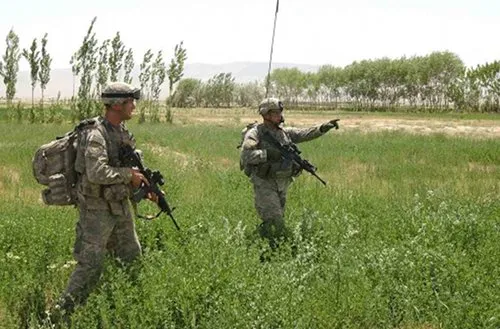Table of Contents
Past transfer classes averaged two or three veterans each; historically, the vast majority of undergraduate veterans matriculate to Stanford as transfers.
Shaw partially attributes this increase to a recent change in the target size of the transfer class from 20 to 50 students, which he said was due to a feeling that Stanford could accommodate more transfers and that the student body would benefit from their presence.
The increase in number of veterans has caused an increase in the proportion of the transfer class they comprise. Up to 19 percent of this year’s transfer class consisted of veterans, as compared to 10 to 15 percent traditionally.
Ron Diaz, director of student awards in the Office of Financial Aid, cites the efforts of veterans already on campus as another possible reason for the increase in veteran undergraduate admissions: “There’s been an increase in the amount of attention because of veterans who were transferred admits…letting [other veterans] know that Stanford’s an option.”
Marine Corps veteran Chris Clark ’12, a political science major, said that he benefited from this informal network.
“The [veterans] that were here helped me with the essays, helped me get everything I needed to know to make the best application that I could,” he said.
Clark said the admissions office was very open and receptive once he approached it, but credits veteran acquaintances at Stanford with helping him understand the process and connect with administrators who could assist him.
Clark’s first connection to the veteran community at Stanford was William Treseder ’12. majoring in science, technology, and society. Clark contacted Treseder after finding his email online. Treseder, another former Marine, said that he has been working to organize the veteran community since the beginning of his Stanford career after noticing a lack of any veteran-specific institutional support.
Treseder believes that “a lot of that [support], at the end of the day, comes down to connecting veterans with each other.” But he is quick to compliment the administration for making progress towards helping veterans transition. Specifically, he singled out the efforts of Professor William Perry ’49 MS ‘50 and Distinguished Fellow George Schultz of the Hoover Institution, both veterans themselves, as well as the Office of the President of Stanford University.
One of the administration’s major efforts to better integrate veterans into campus is the Haas Center for Public Service’s Military Service as Public Service (MSAPS) program, which is designed to “recogniz[e] and support” those who have served in the military or will serve in the military on campus, according to the director for student development and leadership programs at the Haas Center and the staff coordinator for the MSAPS program, Kristina Lobo.
The President’s office asked the Haas Center to create a military service-oriented program, Lobo said, after communicating with veterans on campus about the dearth of resources for them to access. The President’s office also funds the MSAPS program. Lobo sees the long-term role of the program as being “a veteran resource center, something akin to [the] community centers,” but she is for now happy with its position supporting veterans and ROTC cadets and increasing awareness of military issues on campus.
If there is any discontent within the veteran community over their treatment by the administration, it is regarding the definition of a veteran. According to Diaz, anyone who attends a service academy for at least one day and receives a discharge other than dishonorable is considered a veteran by federal law for financial aid purposes, even if they have never served on active duty.
This is troubling to Treseder, as he does not consider these transfers veterans and believes their inclusion in the veteran statistics is misleading. Joseph Welch ’13, an economics major who transferred from West Point, concurs: “all I did was train…I don’t consider myself a veteran.”
In fact, though Shaw emphasizes that the admissions office is aware of this distinction, of the nine transfer veterans admitted this year, three were from service academies, according to Lobo.
Yet despite this point of contention, the general consensus seems to be that Stanford is becoming more accessible to veterans, through both unofficial outreach and increasing official support. Shaw sums up the admissions office’s view of veterans: “We’re wide open to every constituent group…but if you see a valedictorian who’s served in Iraq…you just go, this is really amazing.”




